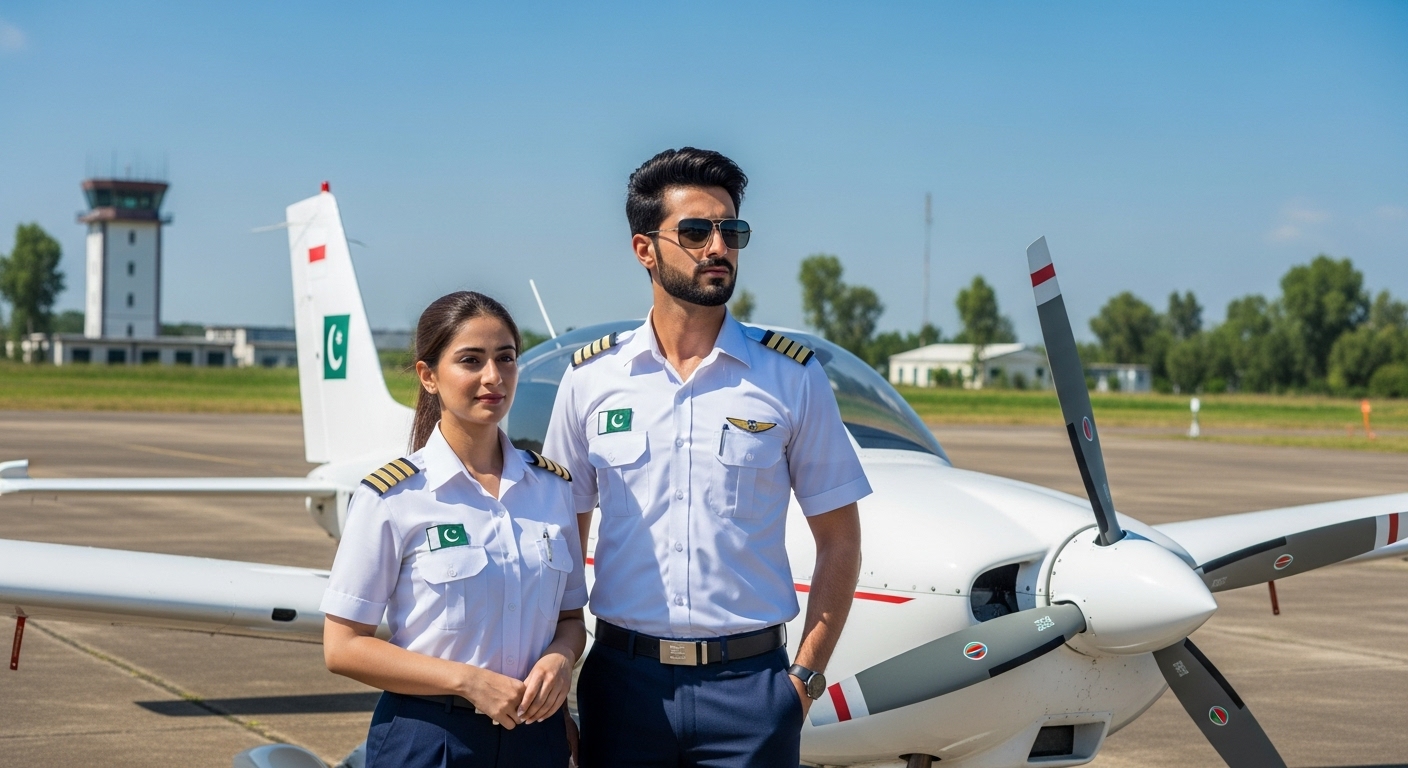Are you dreaming of flying high in the skies? If you’re wondering how to become a pilot in Pakistan after matric (10th class), you’re not alone. Many young students aim to pursue a career in aviation right after completing their matriculation. This article will walk you through all the steps, requirements, costs, and training options to help you achieve your goal of becoming a commercial or private pilot in Pakistan.
Step-by-Step Guide to Become a Pilot After Matric in Pakistan
1. Understand the Types of Pilot Licenses in Pakistan
Before starting, it’s important to know the types of pilot licenses offered in Pakistan by the Pakistan Civil Aviation Authority (PCAA):
- Student Pilot License (SPL) – Initial license to begin flight training
- Private Pilot License (PPL) – For non-commercial flying
- Commercial Pilot License (CPL) – Required for professional pilots
- Airline Transport Pilot License (ATPL) – Highest level for airline captains
If you want to fly professionally, you’ll need to go all the way to CPL or ATPL.
2. Meet the Basic Eligibility Criteria
Even after matric, you can begin preparing to become a pilot. However, for CPL, the minimum education requirement is Intermediate (FSc Pre-Engineering or Pre-Medical with Physics and Math).
But you can start early by:
- Completing O-levels or Matric with Science
- Enrolling in Intermediate or A-levels (Physics and Math are compulsory for CPL)
Tip: Start flying courses with a Student Pilot License (SPL) while completing your FSc/A-levels.
3. Choose a PCAA-Approved Flying School
You must enroll in a PCAA-certified flying academy. Some top flying schools in Pakistan include:
- Hybrid Aviation – Lahore
- Rawalpindi Flying Club
- Pakistan Aviation Academy – Karachi
- Lahore Flying Club
Make sure the school offers full training from SPL to CPL and uses well-maintained aircraft.
4. Pass the Required Medical Tests
You need to pass a Class 1 Medical Examination from a CAA-approved doctor. The test checks:
- Vision (must be 6/6 with or without glasses)
- Hearing
- General physical and mental health
Without passing the medical test, you cannot become a licensed pilot.
5. Start with the Student Pilot License (SPL)
After joining a flying school, you’ll get training to qualify for the Student Pilot License, which includes:
- Basic flying theory
- Introductory flight hours (usually 10–20 hours)
This license allows you to start actual flying under instructor supervision.
6. Progress to Private Pilot License (PPL)
Once you have enough flight hours and pass the required exams, you’ll earn your Private Pilot License. It usually requires:
- 40–50 flying hours
- Written tests (air law, navigation, meteorology, etc.)
- A flight test
7. Earn Your Commercial Pilot License (CPL)
To become a professional pilot, the CPL is your goal. Requirements include:
- Intermediate (FSc/A-levels) with Physics and Math
- Minimum 150 to 200 flying hours
- Theoretical exams and practical flight test
- Class 1 medical fitness
After earning your CPL, you can apply to airlines, charter companies, or cargo services.
Cost of Becoming a Pilot in Pakistan
The cost varies based on the flying school and aircraft used. On average:
- SPL to PPL: PKR 1,000,000 – 1,500,000
- CPL (complete): PKR 4,000,000 – 6,000,000
Total estimated cost to become a commercial pilot in Pakistan: PKR 5 to 7 million.
Career Opportunities After Becoming a Pilot in Pakistan
Once you have your CPL, you can work as:
- Commercial Airline Pilot (after getting ATPL)
- Charter or Private Jet Pilot
- Flight Instructor
- Cargo Aircraft Pilot
- Aerial Survey or Rescue Pilot
Popular airlines to apply for include PIA, Airblue, Serene Air, and AirSial.
Final Words: Is It Possible to Become a Pilot After Matric?
Yes! While you cannot become a commercial pilot immediately after matric, you can start your aviation journey by enrolling in a flying school, getting your SPL, and continuing your FSc (with Physics and Math). With passion, dedication, and the right training, the sky is truly the limit!

Leave a Reply